Challenging torrential rains countered by cooperative bats in Costa Rica
Merlin and MTBC team members spent 19 days in Costa Rica last November on a filming trip for “Bat City” with its Director and Emmy
This rainy February, we visited Los Cedros Biological Reserve in Ecuador.
Roo Vandegrift, and crew, are filming Marrow of the Mountain; a documentary about the mega-mining now in Ecuador. “In 2017, the amount of land available for mining expanded by hundreds of percent, leaving huge swaths of Ecuador’s most sensitive and biodiverse habitats at the mercy of international mining interests. These concessions appeared suddenly and were sold without public knowledge or consent, especially affecting the mineral-rich and endangered Choco Rainforest.”
Roo invited MTBC to conduct a bat survey, which could support litigation to stop the illegal gold mining and help protect the reserve’s unique flora and fauna. The data is to track diversity and endemism at Los Cedros, and analyses are submitted to conservation groups and government agencies, like Critical Ecosystem Partnership Fund and the Ecuadorian state Institute for Biodiversity (part of the Ministry of Environment).
Los Cedros Biological Reserve consists of 17,000 acres of premontane wet tropical forest and cloud forest. Of this, 2,650 acres is formerly colonized land, while the remainder is primary forest. The reserve is a southern buffer zone for the 450,000-acre Cotocachi-Cayapas Ecological Reserve, and both are part of the Choco Phytogeographical Zone. The Choco region is one of the most biologically diverse and endemic habitats on Earth.
Part of its charm is the journey to get there. Monica and I left our Quito AirBnB at 5 am to board a 3-hour long bus ride to Chontal, where we met Marc Dragiewicz of Eyes of the World Films. It was then just a short 30-minute truck ride to the trailhead.
Atop Marta the mule, Fausto Lomas guided us up the mountain with Sarito and Manaba (also mules!) carrying all the luggage. Without the mules, this trip would have been nearly impossible. Despite it being the rainy season, we were lucky to have clear blue skies for the two-hour hike.
We were warmly greeted by Jose De Coux, Founder and Administrator of the Los Cedros Scientific Station, Elisa Levy, Research Coordinator of Los Cedros Scientific Station and some delicious food thanks to Jose and resident sisters Sulma and Maria Sanchez.
After months of uncertainty, the timing worked out perfectly. A group of nearly 15 other scientists and friends were visiting the reserve for Carnival weekend. Roo, Dylan Stirewalt, Solange Yepez, and Antonella Carrasco, all part of the Marrow of the Mountain crew, were also there to greet us.
Howler monkeys serenaded us in the evenings!
We spent the next two days exploring the beautiful reserve, hiking the trails in search of bat habitat with guide, Martin Obando. We found many leaf tents, unfurled leaves, hollow logs, and trees in both secondary and primary forests.
Bat Portraits by Daniel Whitby
Fruit bats roosted under the roof and some Carollia bats under an overturned barrel. A whole colony of bats was found in the shed next to the generator but we couldn’t see them clearly enough to identify. However, they may have been Myotis riparius or oxyotus, possibly even another species but we couldn’t confirm.
Carnival wasn’t the only thing being celebrated this weekend: Jose was presented with an award recognizing his incredible contributions to the conservation of Ecuador – it is because of him that Los Cedros exists and has been protected.
On our third day, we were joined by United Kingdom colleague, Daniel Whitby, and local bat biologist, Carlos Avila, student of conservation biology and tropical ecology from Universidad Técnica Particular de Loja (UTPL). This being such a short, exploratory trip, we were eager to finally begin netting!
We set three mist nets on our first night. We were lucky again with no rain, and there were bats! Even without the rain, the trails were increasingly muddy as the four of us walked back and forth every ten or so minutes to check for bats. We caught 30 bats of 12 species and finally got to bed by 3 am. Then the rains came.
We were not so lucky the second night. During the day, we hiked down the mountain to the river to check it out and decided to set nets there later.
Of course, we knew there was a good chance of rain but we had to try our best with so little time. We set one mist net over the creek and Daniel unfolded the tripods for photography, but during set-up, it started to pour!
We closed the net and took shelter under the Old Bridge. Being a determined group, we decided to wait it out. Three hours later, the rain showed no signs of stopping so we packed up and headed back to camp. There was a spread of delicious food and even a birthday cake to celebrate Daniel, Teresa and Roo’s birthdays.
Monica and I left the following day. Carlos and Daniel stayed to complete two more days of surveying. On the way out, I found three Spix’s disk winged bats (Thyroptera tricolor) in an unfurling leaf!
On the third and fourth nights, Daniel and Carlos caught an additional 6-8 species, an estimate because a few were hard to identify.
Upon return, we had a video meeting with Juan Pablo Carerra, Manager of the Quito Natural History Museum/Guatavo Orcés V of the Escuela Politecnica Nacional (EPN), and Pamela, a local biologist and colleague of EPN working with bat acoustics, to discuss future possibilities for collaboration.
It was a brief visit but sufficient to document extraordinary bat diversity!
If you’re interested in visiting or supporting Los Cedros Biological Reserve, feel free to reach out.
Reserva Los Cedros species list, total minimum 22 species:
Anoura aequatoris/caudifer – Equatorial tailless bat
Anoura peruana- Peruvian tailless bat
Anoura cultrate – Black tailless bat
Carollia brevicauda- Silky short-tailed bat
Carollia castanea- Chestnut short-tailed bat
Carollia perspicillata- Seba’s short-tailed fruit bat
Chiroderma salvini- Salvin’s big-eyed bat
Dermanura (Artibeus) toltecus- Toltec fruit-eating bat
Desmodus rotundus- Common vampire bat
Mesophylla macconnellii- MacConnell’s bat
Micronycteris hirsuta- Hairy big-eared bat
Micronycteris megalotis- Little big-eared bat
Myotis oxyotus- Montane myotis
Platyrrhinus umbratus – Shadowy broad-nosed bat
Platyrrhinus vittatus- Greater broad-nosed bat
Rhinophylla alethina- Hairy little fruit bat
Sturnira bakeri/luisi- Baker’s yellow-shouldered bat/ Luis’ yellow-shouldered bat
Sturnira ludovici- Highland yellow-shouldered bat
Sturnira erythromos – Hairy yellow-shouldered bat
Sturnira koopmanhilli – Chocoan yellow-shouldered bat
Sturnira bidens – Bidetate yellow-shouldered bat
Thyroptera tricolor- Spix’s disk-winged bat
Some extra rain forest photos for your enjoyment….
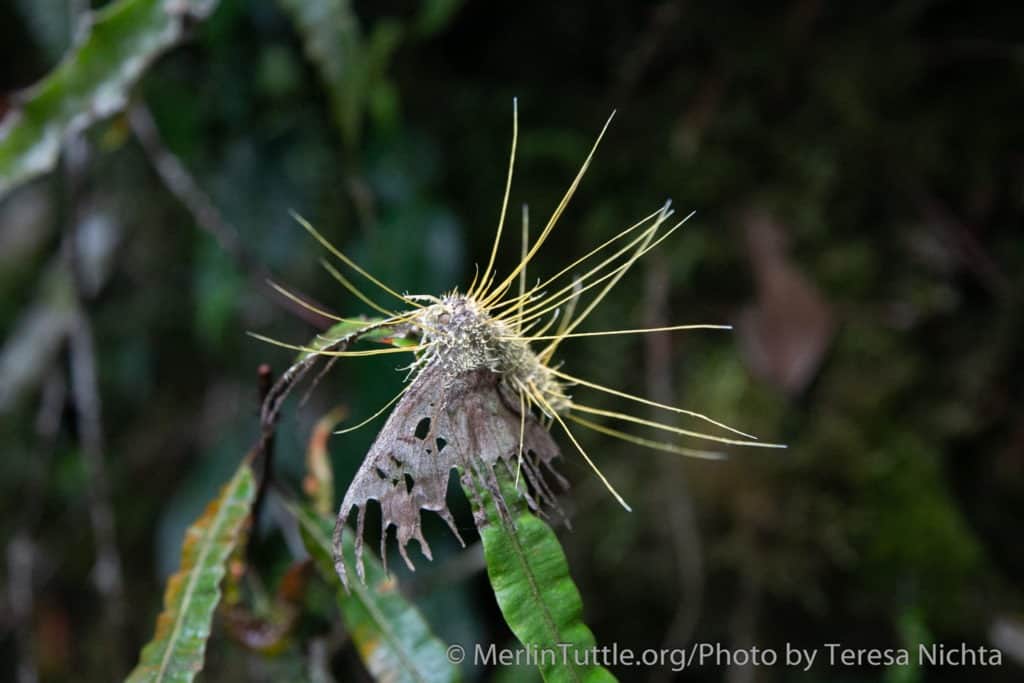
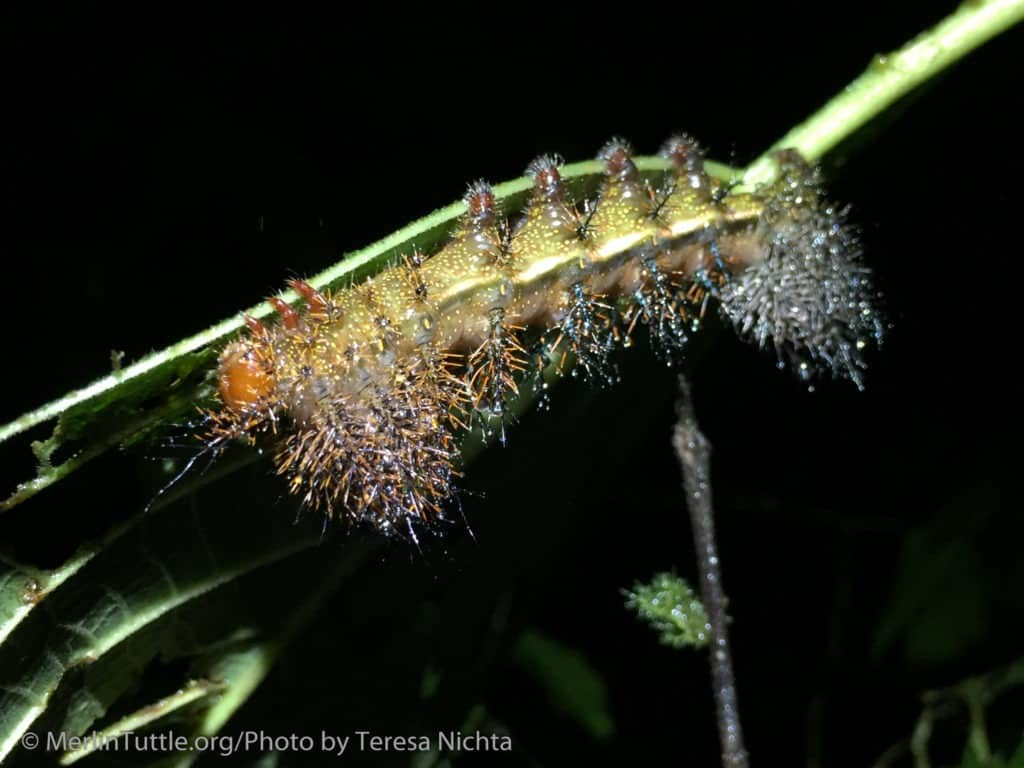
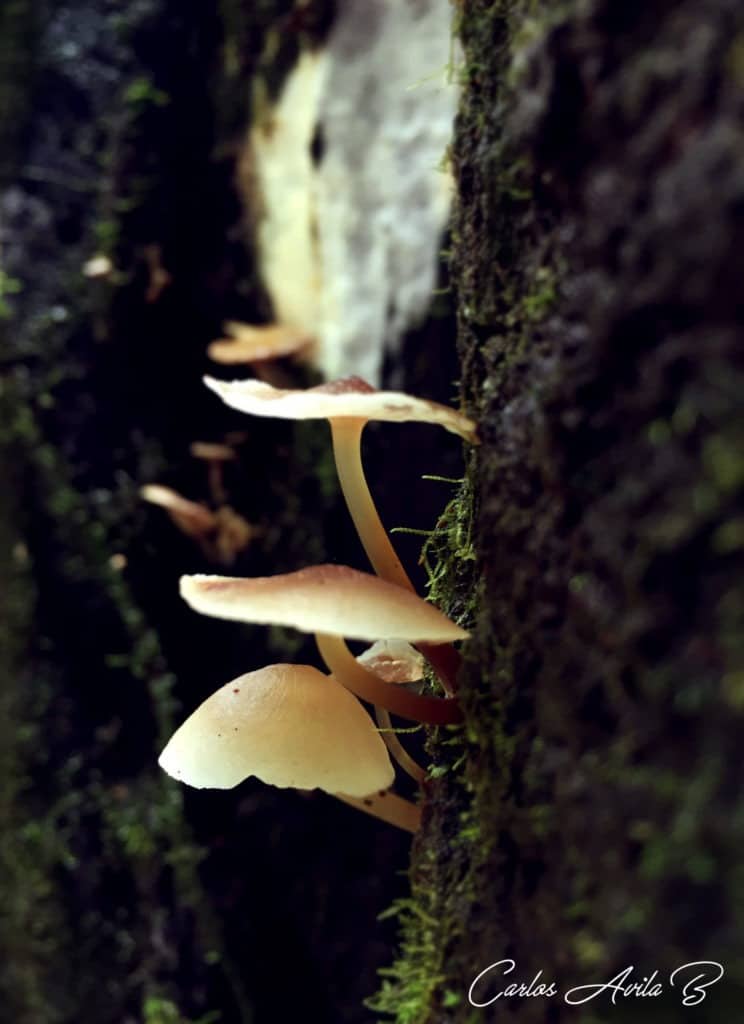
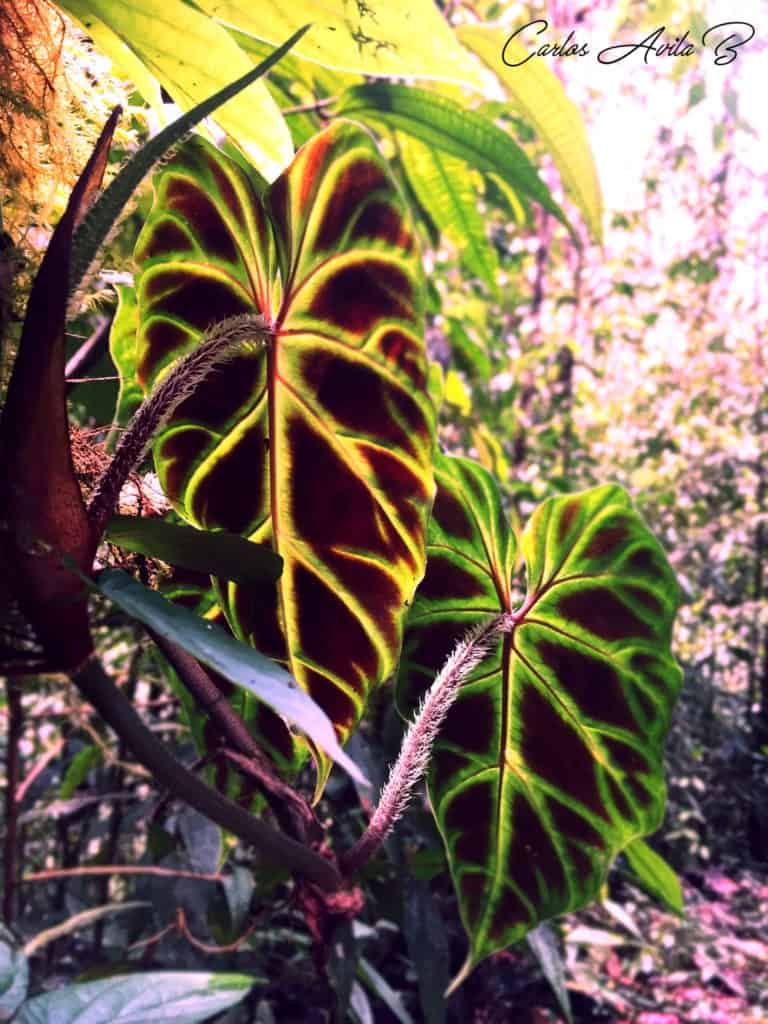
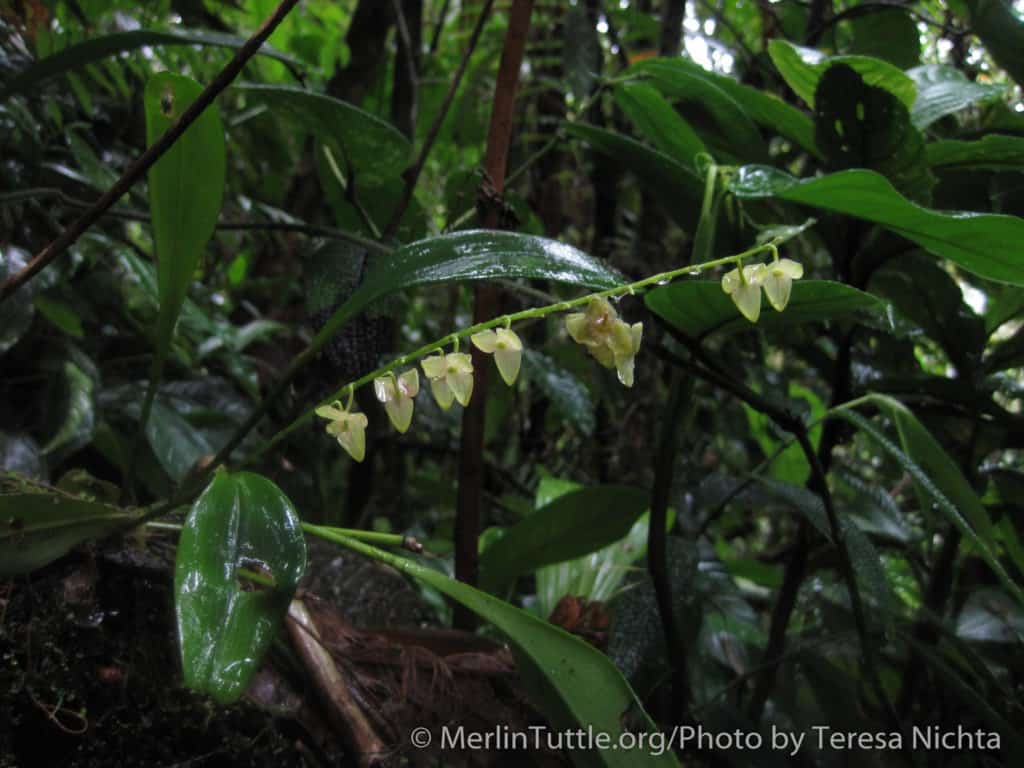
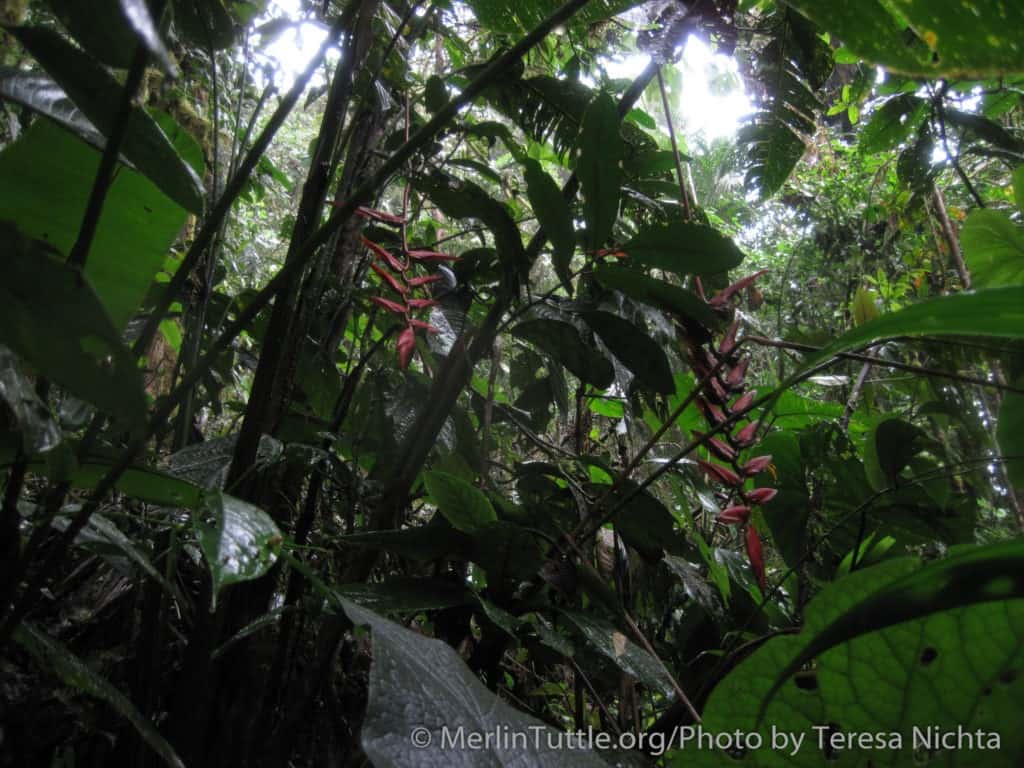
Love our content? Support us by sharing it!
Merlin and MTBC team members spent 19 days in Costa Rica last November on a filming trip for “Bat City” with its Director and Emmy
Bats can use sounds in many complex ways. They can sing and even have different dialects… When imagining a bat, the first thoughts that come
Thanks to all the Join the Nightlife: Bats and Agriculture attendees who joined us out in the field this year! Guests got hands-on experience with
Supporter and friend of MTBC, Australian conservation and animal welfare photojournalist Doug Gimesy, had his images recognized in two categories at the recent Siena International
2024 © Merlin Tuttle’s Bat Conservation. All rights reserved.
Madelline Mathis has a degree in environmental studies from Rollins College and a passion for wildlife conservation. She is an outstanding nature photographer who has worked extensively with Merlin and other MTBC staff studying and photographing bats in Mozambique, Cuba, Costa Rica, and Texas. Following college graduation, she was employed as an environmental specialist for the Florida Department of Environmental Protection. She subsequently founded the Florida chapter of the International DarkSky Association and currently serves on the board of DarkSky Texas. She also serves on the board of Houston Wilderness and was appointed to the Austin Water Resource Community Planning Task Force.
Michael Lazari Karapetian has over twenty years of investment management experience. He has a degree in business management, is a certified NBA agent, and gained early experience as a money manager for the Bank of America where he established model portfolios for high-net-worth clients. In 2003 he founded Lazari Capital Management, Inc. and Lazari Asset Management, Inc. He is President and CIO of both and manages over a half a billion in assets. In his personal time he champions philanthropic causes. He serves on the board of Moravian College and has a strong affinity for wildlife, both funding and volunteering on behalf of endangered species.